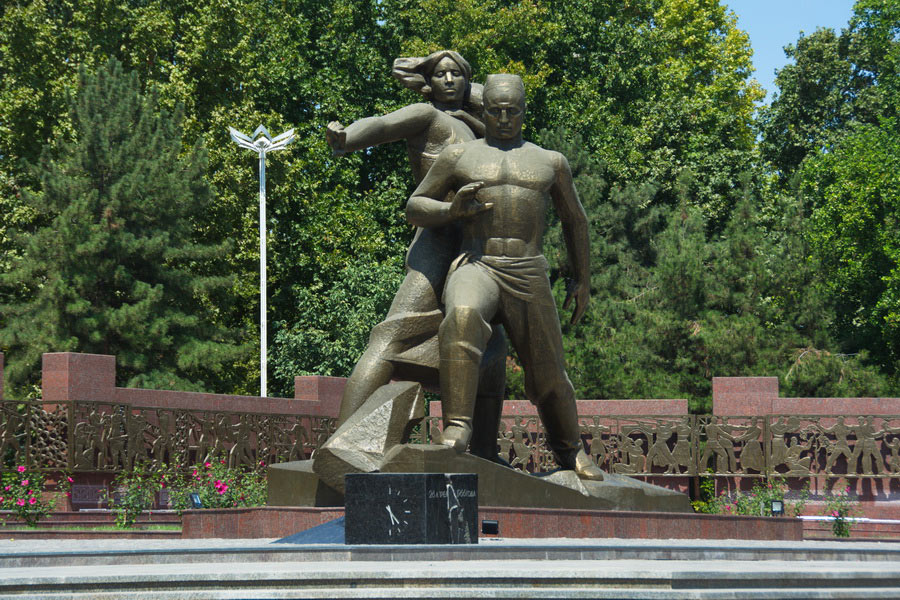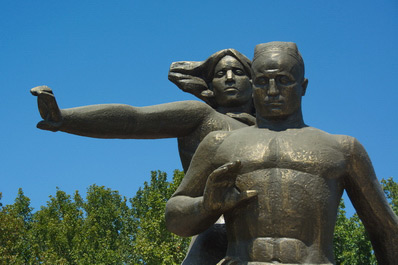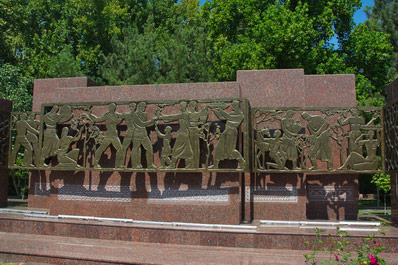Courage Memorial, Tashkent

Among the large number of Tashkent monuments Courage Memorial deserves special attention. It is dedicated to the events that took place almost 50 years ago and left a deep trace in Tashkent's history. On the granite podium of the monuments stands a black labradorite cube. One of its sides contains the engraved inscription: April 26, 1966; on another side there is the engraved image of a clock-face whose hands show the time: 24 minutes past 5. On this day, at this early morning hour the city was struck by a severe earthquake measuring 8.3 degrees on the Richter scale. The crack in the cube symbolizes a break in the ground and runs to the foot of a bronze sculpture that depicts a woman clasping a child to herself and a man who tries to shield them with his body from the natural forces... Relief compositions depicting scenes of the reconstruction of Tashkent serve as the background for the monument.
On that memorable morning the city was woken up by roars and underground booms. The ground was shaking under the feet of the people who were hurriedly leaving their homes; the ceilings were cracking, the window frames and doorposts were breaking like matches. Tashkent citizens were accustomed to earthquakes that used to happen a few times a year. Tashkent is situated in the seismic zone of the young Tien Shan Mountains; Karjantau tectonic suture runs right under the city. But the magnitude of this strike had surpassed all the previous ones. The epicenter was at a depth of 10 kilometers under the central part of the city, almost where ten years later Courage Memorial was set up. This was a "vertical" earthquake, so most of the buildings cracked all over and went distorted, and only a few dozens of them collapsed, mainly public ones. Thanks to it the people were not killed, but almost half of them lost their homes. Just in a minute's time over two million square meters of accommodation were damaged; a lot of kindergartens and schools, offices, factories and stores were totally or partially wrecked.
Tashkent people faced the earthquake courageously. Just one day later they moved to large tents pitched on the pavements and in the parks. They had to experience over a thousand more tremors of various magnitudes. Water and electricity supply was not stopped, which prevented epidemics, a frequent concomitant of natural disasters. No cases of pillage were recorded in the city.
Builders from all the Soviet republics took part in the reconstruction of Tashkent. Just a few months later the first new buildings were ready to accommodate their occupants. On the outskirts rose new residential neighbourhoods; the wrecked central neighbourhoods, like those surrounding Courage Memorial, were rebuilt. Today the monument symbolizes peace and well-being in Tashkent homes. Newlyweds bring flowers to its pedestal; in the nearby park cheerful children's voices are heard...



